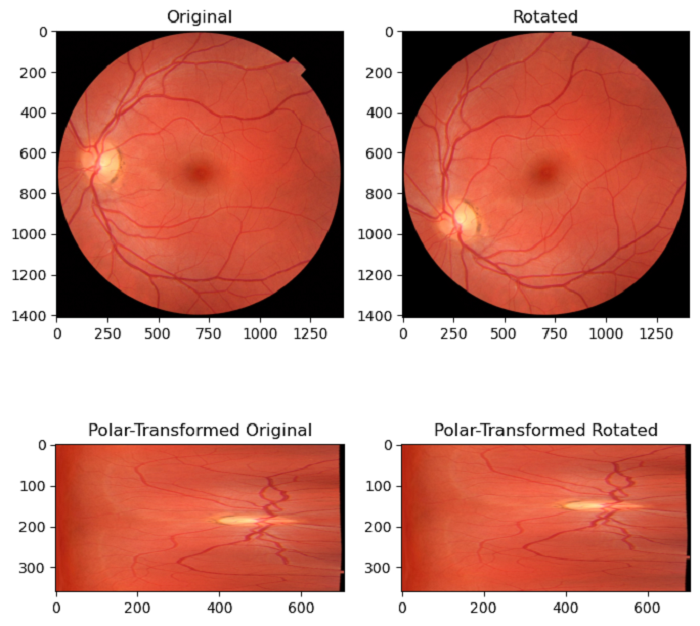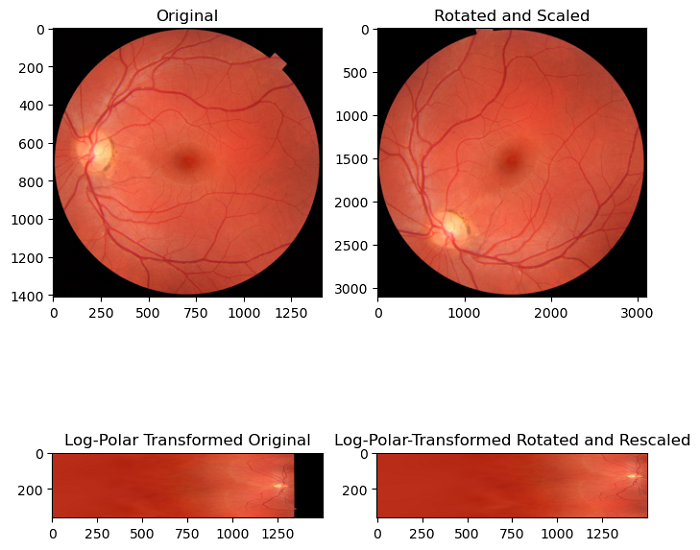
- Scikit Image – Introduction
- Scikit Image - Image Processing
- Scikit Image - Numpy Images
- Scikit Image - Image datatypes
- Scikit Image - Using Plugins
- Scikit Image - Image Handlings
- Scikit Image - Reading Images
- Scikit Image - Writing Images
- Scikit Image - Displaying Images
- Scikit Image - Image Collections
- Scikit Image - Image Stack
- Scikit Image - Multi Image
- Scikit Image - Data Visualization
- Scikit Image - Using Matplotlib
- Scikit Image - Using Ploty
- Scikit Image - Using Mayavi
- Scikit Image - Using Napari
- Scikit Image - Color Manipulation
- Scikit Image - Alpha Channel
- Scikit Image - Conversion b/w Color & Gray Values
- Scikit Image - Conversion b/w RGB & HSV
- Scikit Image - Conversion to CIE-LAB Color Space
- Scikit Image - Conversion from CIE-LAB Color Space
- Scikit Image - Conversion to luv Color Space
- Scikit Image - Conversion from luv Color Space
- Scikit Image - Image Inversion
- Scikit Image - Painting Images with Labels
- Scikit Image - Contrast & Exposure
- Scikit Image - Contrast
- Scikit Image - Contrast enhancement
- Scikit Image - Exposure
- Scikit Image - Histogram Matching
- Scikit Image - Histogram Equalization
- Scikit Image - Local Histogram Equalization
- Scikit Image - Tinting gray-scale images
- Scikit Image - Image Transformation
- Scikit Image - Scaling an image
- Scikit Image - Rotating an Image
- Scikit Image - Warping an Image
- Scikit Image - Affine Transform
- Scikit Image - Piecewise Affine Transform
- Scikit Image - ProjectiveTransform
- Scikit Image - EuclideanTransform
- Scikit Image - Radon Transform
- Scikit Image - Line Hough Transform
- Scikit Image - Probabilistic Hough Transform
- Scikit Image - Circular Hough Transforms
- Scikit Image - Elliptical Hough Transforms
- Scikit Image - Polynomial Transform
- Scikit Image - Image Pyramids
- Scikit Image - Pyramid Gaussian Transform
- Scikit Image - Pyramid Laplacian Transform
- Scikit Image - Swirl Transform
- Scikit Image - Morphological Operations
- Scikit Image - Erosion
- Scikit Image - Dilation
- Scikit Image - Black & White Tophat Morphologies
- Scikit Image - Convex Hull
- Scikit Image - Generating footprints
- Scikit Image - Isotopic Dilation & Erosion
- Scikit Image - Isotopic Closing & Opening of an Image
- Scikit Image - Skelitonizing an Image
- Scikit Image - Morphological Thinning
- Scikit Image - Masking an image
- Scikit Image - Area Closing & Opening of an Image
- Scikit Image - Diameter Closing & Opening of an Image
- Scikit Image - Morphological reconstruction of an Image
- Scikit Image - Finding local Maxima
- Scikit Image - Finding local Minima
- Scikit Image - Removing Small Holes from an Image
- Scikit Image - Removing Small Objects from an Image
- Scikit Image - Filters
- Scikit Image - Image Filters
- Scikit Image - Median Filter
- Scikit Image - Mean Filters
- Scikit Image - Morphological gray-level Filters
- Scikit Image - Gabor Filter
- Scikit Image - Gaussian Filter
- Scikit Image - Butterworth Filter
- Scikit Image - Frangi Filter
- Scikit Image - Hessian Filter
- Scikit Image - Meijering Neuriteness Filter
- Scikit Image - Sato Filter
- Scikit Image - Sobel Filter
- Scikit Image - Farid Filter
- Scikit Image - Scharr Filter
- Scikit Image - Unsharp Mask Filter
- Scikit Image - Roberts Cross Operator
- Scikit Image - Lapalace Operator
- Scikit Image - Window Functions With Images
- Scikit Image - Thresholding
- Scikit Image - Applying Threshold
- Scikit Image - Otsu Thresholding
- Scikit Image - Local thresholding
- Scikit Image - Hysteresis Thresholding
- Scikit Image - Li thresholding
- Scikit Image - Multi-Otsu Thresholding
- Scikit Image - Niblack and Sauvola Thresholding
- Scikit Image - Restoring Images
- Scikit Image - Rolling-ball Algorithm
- Scikit Image - Denoising an Image
- Scikit Image - Wavelet Denoising
- Scikit Image - Non-local means denoising for preserving textures
- Scikit Image - Calibrating Denoisers Using J-Invariance
- Scikit Image - Total Variation Denoising
- Scikit Image - Shift-invariant wavelet denoising
- Scikit Image - Image Deconvolution
- Scikit Image - Richardson-Lucy Deconvolution
- Scikit Image - Recover the original from a wrapped phase image
- Scikit Image - Image Inpainting
- Scikit Image - Registering Images
- Scikit Image - Image Registration
- Scikit Image - Masked Normalized Cross-Correlation
- Scikit Image - Registration using optical flow
- Scikit Image - Assemble images with simple image stitching
- Scikit Image - Registration using Polar and Log-Polar
- Scikit Image - Feature Detection
- Scikit Image - Dense DAISY Feature Description
- Scikit Image - Histogram of Oriented Gradients
- Scikit Image - Template Matching
- Scikit Image - CENSURE Feature Detector
- Scikit Image - BRIEF Binary Descriptor
- Scikit Image - SIFT Feature Detector and Descriptor Extractor
- Scikit Image - GLCM Texture Features
- Scikit Image - Shape Index
- Scikit Image - Sliding Window Histogram
- Scikit Image - Finding Contour
- Scikit Image - Texture Classification Using Local Binary Pattern
- Scikit Image - Texture Classification Using Multi-Block Local Binary Pattern
- Scikit Image - Active Contour Model
- Scikit Image - Canny Edge Detection
- Scikit Image - Marching Cubes
- Scikit Image - Foerstner Corner Detection
- Scikit Image - Harris Corner Detection
- Scikit Image - Extracting FAST Corners
- Scikit Image - Shi-Tomasi Corner Detection
- Scikit Image - Haar Like Feature Detection
- Scikit Image - Haar Feature detection of coordinates
- Scikit Image - Hessian matrix
- Scikit Image - ORB feature Detection
- Scikit Image - Additional Concepts
- Scikit Image - Render text onto an image
- Scikit Image - Face detection using a cascade classifier
- Scikit Image - Face classification using Haar-like feature descriptor
- Scikit Image - Visual image comparison
- Scikit Image - Exploring Region Properties With Pandas
Registration Using Polar and Log-Polar
Polar and log-polar transformations are mathematical techniques used in image registration, a process that aligns two or more images to facilitate comparison, analysis, or further processing. These transformations are particularly useful for dealing with rotation and scale variations in images.
Phase correlation (skimage.registration.phase_cross_correlation) is a powerful technique for determining the translation offset between two similar images. However, it doesn't handle rotation and scaling differences well, which are common in real-world scenarios. To address these issues, we can leverage the log-polar transform and the translation invariance of the frequency domain.
To detect and correct rotational and scaling differences between two images, we can take advantage of two geometric properties of the log-polar transform and the translation invariance of the frequency domain. Specifically, in this context −
Rotation in the Cartesian space corresponds to translation along the angular coordinate () axis in log-polar space.
Scaling in the Cartesian space equates to translation along the radial coordinate (ρ = ln(√(x^2 + y^2))) in log-polar space.
Finally, shifts in the spatial domain do not affect the magnitude spectrum in the frequency domain.
In this tutorial we will see series of examples, we build on these concepts to demonstrate how the log-polar transformation, using the function "transform.warp_polar," can be effectively conjunction with phase correlation. This combination facilitates the recover rotational and scaling differences between two images, even when there is an additional translational offset.
Using the polar transform to recover the rotation difference between two images
In this scenario, we consider the simple case of two images, where the only difference between the images is rotation around a common center point. By transforming these images into polar space, the rotation difference effectively transforms into a straightforward translation difference. This translation difference can be accurately recovered using phase correlation.
Example
Here is an example that demonstrates the use of image registration techniques to recover the rotational difference between two images using the polar transformation.
import numpy as np
import matplotlib.pyplot as plt
from skimage import data
from skimage.registration import phase_cross_correlation
from skimage.transform import warp_polar, rotate, rescale
from skimage.util import img_as_float
polar_radius = 705
rotation_angle = 35
# Load the input image
original_image = data.retina()
# convert the input image to floating-point format
original_image = img_as_float(original_image)
# rotate the input image
rotated_image = rotate(original_image, rotation_angle)
# transform the original and rotated images using the warp_polar function
original_polar = warp_polar(original_image, radius=polar_radius, channel_axis=-1)
rotated_polar = warp_polar(rotated_image, radius=polar_radius, channel_axis=-1)
# Display the original and rotated polar images
fig, axes = plt.subplots(2, 2, figsize=(8, 8))
ax = axes.ravel()
ax[0].set_title("Original")
ax[0].imshow(original_image)
ax[1].set_title("Rotated")
ax[1].imshow(rotated_image)
ax[2].set_title("Polar-Transformed Original")
ax[2].imshow(original_polar)
ax[3].set_title("Polar-Transformed Rotated")
ax[3].imshow(rotated_polar)
plt.show()
# Calculate the translation (shifts) by applying the phase correlation to the original and rotated polar images
shifts, error, phasediff = phase_cross_correlation(original_polar, rotated_polar, normalization=None)
print(f'Expected value for counterclockwise rotation in degrees: '
f'{rotation_angle}')
print(f'Recovered value for counterclockwise rotation: '
f'{shifts[0]}')
Output

Expected value for counterclockwise rotation in degrees: 35 Recovered value for counterclockwise rotation: 35.0
Using the log-polar transform to recover rotation and scaling differences between two images
In this scenario, we consider the images which are differ by both rotation and scaling (note the axis tick values). By transforming these images into log-polar space, we can recover rotation as before, and now also scaling, by phase correlation.
Example
import numpy as np
import matplotlib.pyplot as plt
from skimage import data
from skimage.registration import phase_cross_correlation
from skimage.transform import warp_polar, rotate, rescale
from skimage.util import img_as_float
# Parameters for log-polar transformation, radius must be large enough to capture useful info in larger image
log_polar_radius = 1500
rotation_angle = 53.7
scaling_factor = 2.2
# Load an example image and convert it to a floating-point format
original_image = data.retina()
original_image = img_as_float(original_image)
# Create a rotated and scaled version of the original image
rotated_and_scaled_image = rescale(rotate(original_image, rotation_angle), scaling_factor, channel_axis=-1)
# Perform log-polar transformations on both images
original_log_polar = warp_polar(original_image, radius=log_polar_radius,
scaling='log', channel_axis=-1)
rotated_and_scaled_log_polar = warp_polar(rotated_and_scaled_image, radius=log_polar_radius,
scaling='log', channel_axis=-1)
# Visualize the images
fig, axes = plt.subplots(2, 2, figsize=(8, 8))
ax = axes.ravel()
ax[0].set_title("Original")
ax[0].imshow(original_image)
ax[1].set_title("Rotated and Scaled")
ax[1].imshow(rotated_and_scaled_image)
ax[2].set_title("Log-Polar Transformed Original")
ax[2].imshow(original_log_polar)
ax[3].set_title("Log-Polar-Transformed Rotated and Rescaled")
ax[3].imshow(rotated_and_scaled_log_polar)
# Apply phase correlation to recover rotation and scaling differences
shifts, error, phasediff = phase_cross_correlation(original_log_polar, rotated_and_scaled_log_polar,
upsample_factor=20, normalization=None)
shiftr, shiftc = shifts[:2]
# Calculate scale factor from translation
klog = log_polar_radius / np.log(log_polar_radius)
shift_scale = 1 / (np.exp(shiftc / klog))
print(f'Expected value for cc rotation in degrees: {rotation_angle}')
print(f'Recovered value for cc rotation: {shiftr}')
print()
print(f'Expected value for scaling difference: {scaling_factor}')
print(f'Recovered value for scaling difference: {shift_scale}')
Output

Expected value for cc rotation in degrees: 53.7 Recovered value for cc rotation: 53.75 Expected value for scaling difference: 2.2 Recovered value for scaling difference: 2.1981889915232165